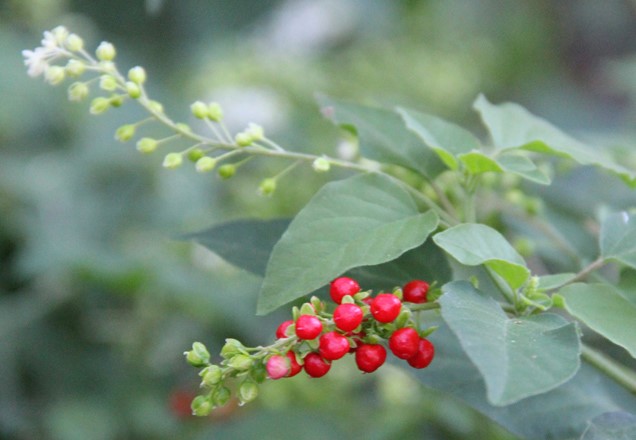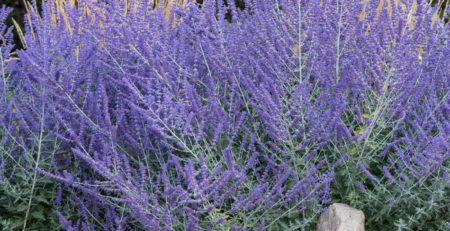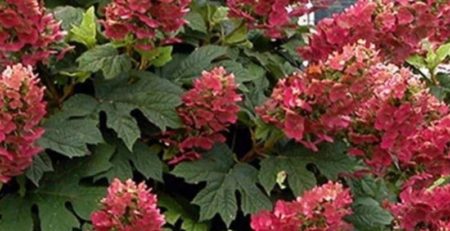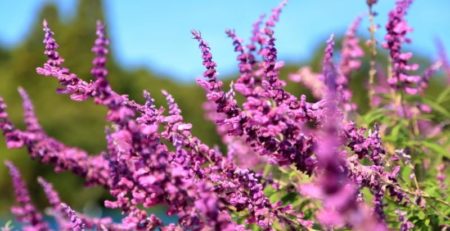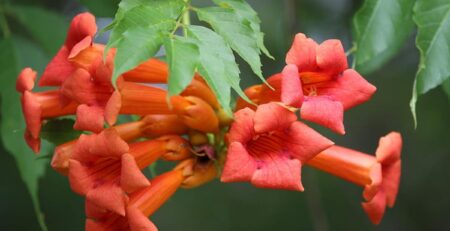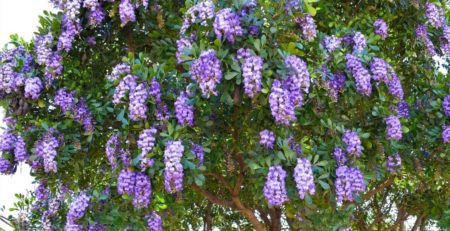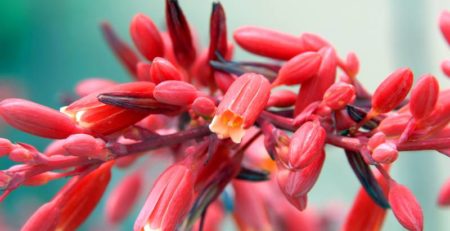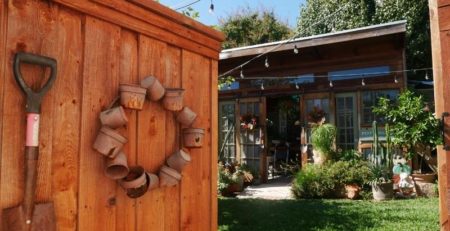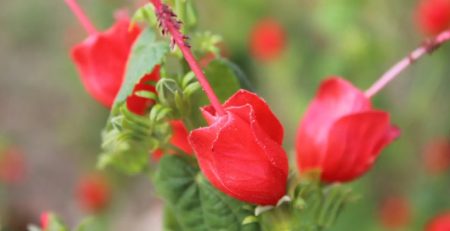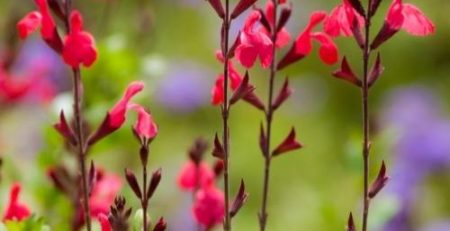Rivina humilis, Pigeonberry
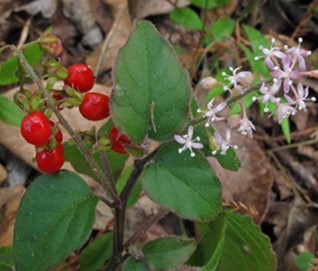
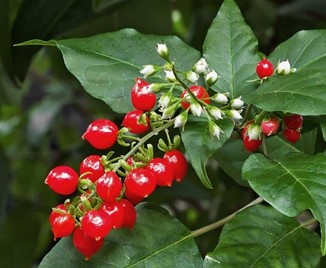
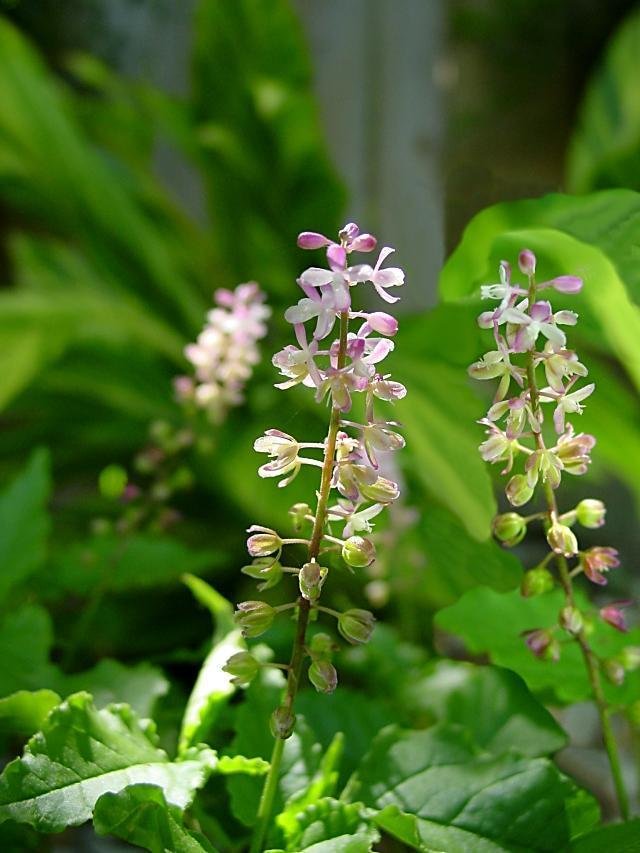
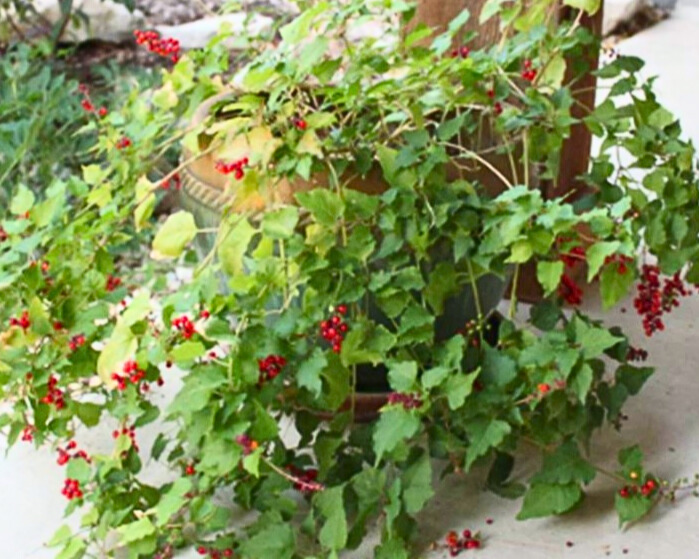
Botanical Name: Rivina humilis
Common Name: Pigeonberry, Rouge Plant, Bloodberry
Synonyms:
Category: Ground Cover
Family: Petiveriaceae
Lifecycle: Perennial
Lifecycle (Alt): Annual
USDA Symbol: RIHU2
Hardiness Zone North: 8A
Hardiness Zone South: 11B
Sun Requirement: Partial Shade
Sun Requirement (Alt): Full Shade
Water Requirement: Medium
Growth Rate: Moderate
Maintenance: Low
Plant Adult Height: 1-3 ft
Plant Adult Spread: 1-2 ft
Plant Spacing: 1-2 ft
Soil Preference: Adaptable
Soil pH Preference: Adaptable
Propagation: Seed, Division
Attracts: Bees, Birds, Butterflies, Moths
Resists: Deer, Disease
Tolerates: Drought, Clay Soil, Heavy Shade, Heat, Salt
Miscellaneous: Tolerates Poor Soil, Wildflower, Native Plant, Monoecious
Description: Pigeonberry is a shade-loving perennial native to North America, prized for its versatility as a groundcover and understory plant. This evergreen herb features lance-shaped to oval leaves with wavy edges, growing in an erect or slightly sprawling habit. Its most distinctive characteristic is the simultaneous display of flowers and fruit, a rare trait among plants. Small, pale pink to white flowers bloom on racemes throughout the growing season, followed by glossy, bright red berries that persist on the plant. These berries are a favorite food source for various bird species, giving the plant its common name. Pigeonberry thrives in partial to full shade and prefers moist, well-draining soil, though it can tolerate periods of drought by going dormant. It attracts pollinators such as butterflies and bees, and serves as a host plant for the Goodson’s Greenstreak butterfly. The plant exhibits moderate deer resistance and salt tolerance, making it suitable for coastal gardens. Pigeonberry is low-maintenance and can be propagated easily through seeds or cuttings, often self-seeding in favorable conditions. While the berries are enjoyed by wildlife, they are considered toxic to humans if ingested. The plant’s juice has historically been used as a natural dye. In landscaping, Pigeonberry excels in woodland gardens, as a border plant, in containers, or as a shade-tolerant groundcover, providing year-round interest with its continuous bloom and fruiting cycle.
Propagation & Planting: To propagate Pigeonberry, collect seeds from ripe berries and thoroughly clean them to remove any pulp. Allow the seeds to dry for a few days to prevent mold. Sow the seeds in a well-draining seed-starting mix, either in individual pots or seed trays, covering them lightly with soil. Maintain consistent moisture without waterlogging, ideally using a spray bottle for even distribution. Place the pots or trays in a warm location with indirect sunlight, maintaining a temperature around 70-75°F (21-24°C) to facilitate germination. Germination can take several weeks, so patience is crucial. Once seedlings possess a couple of true leaves, transplant them carefully to larger containers, continuing to provide indirect sunlight and stable moisture. When planting Pigeonberry outdoors, select a site with partial sunlight and rich, well-drained soil. Space the plants about 12-18 inches apart and dig holes approximately the same depth as the root ball. Gently place each seedling into the prepared hole, backfill with soil, and water thoroughly to eliminate air pockets. Mulching around the base can help retain moisture. Ensure consistent watering, especially during dry spells, but avoid oversaturation.
Plant Care: Pigeonberry thrives in partially shaded areas with dappled sunlight, making it ideal for woodland gardens or as understory planting. It prefers well-draining soil that’s rich in organic material; amend the soil with compost or leaf mold to improve fertility and drainage. This plant is moderately drought-tolerant once established but benefits from regular watering during prolonged dry spells to keep the soil consistently moist, particularly during its growing season. Avoid overwatering, as this can lead to root rot. Pigeonberry does not require heavy fertilization; a light application of balanced organic fertilizer in spring can support growth. Prune after flowering to maintain its shape and encourage bushier growth. Mulching around the base helps retain moisture and suppress weeds. Monitor for common pests such as aphids, and use natural remedies or horticultural oils if infestations occur. Additionally, ensure good air circulation to prevent fungal diseases. Being a relatively low-maintenance plant, Pigeonberry is suitable for various garden settings with minimal care once its basic requirements are met.
Fertilize: Pigeonberry generally thrives without the need for frequent fertilization, adapting well to a variety of soil conditions. However, to enhance growth and berry production, particularly in nutrient-poor soils, a balanced application of a slow-release, all-purpose fertilizer with an NPK ratio of 10-10-10 can be beneficial. Apply this fertilizer sparingly in early spring before new growth begins, ensuring not to over-fertilize, as excessive nutrients can harm the plant. In warmer climates where the growing season extends, a second application in mid-summer may be appropriate. Ensure thorough watering after fertilizer application to help nutrients reach the root zone. Avoid fertilizing in late fall or winter to prevent stimulating growth that may be damaged by cooler temperatures. This schedule helps maintain the Pigeonberry’s health and vigor without promoting excessive leaf growth at the expense of berries.
Prune: To maintain the health and appearance of Pigeonberry, prune in late winter to early spring before new growth begins. During this period, remove any dead, damaged, or crossing branches to encourage an open structure and promote airflow. Use clean, sharp pruning shears to make cuts just above a leaf node or bud to facilitate healing. Avoid heavy pruning as this can stress the plant. Refrain from pruning during late spring and summer when the plant is actively growing and flowering, as this can reduce its ornamental fruit production and disrupt its growth cycle. Light trimming after the flowering period can help maintain a tidy shape. Always remove spent flower stalks to prevent excessive self-seeding. Regular pruning enhances the plant’s vigor and flowering, keeping it attractive throughout the growing season.
Pest & Disease: Pigeonberry is susceptible to various pests and diseases that require prompt attention for healthy growth. Common pests include aphids, spider mites, and whiteflies, which can be identified by inspecting leaves for signs of distortion, wilting, or a sticky residue from honeydew. Control these pests through regular monitoring and employing insecticidal soap or neem oil, ensuring thorough coverage of leaves and stems. Natural predators like ladybugs can also be introduced as a biological control method. Pigeonberry is prone to fungal diseases such as powdery mildew and root rot. Powdery mildew is identified by white, powdery spots on leaf surfaces. Treat it by removing infected foliage and applying fungicides containing potassium bicarbonate or sulfur. For root rot, usually caused by overwatering or poor drainage, improve soil aeration and drainage, and consider applying a fungicide labeled for root rot control. Consistent maintenance, such as ensuring good air circulation around plants and avoiding overhead watering, minimizes disease occurrence. Regularly inspect plants for early signs of pests and diseases to apply timely interventions and maintain plant health.
Attribution: This plant information is the copyrighted property of PlantTAGG, Inc. (www.planttagg.com) and is published with permission.
Link to Full Profile: https://m.planttagg.com/#/public/details?key=4SWX8SONQNQSO3LBEMHDMSEJWG1

